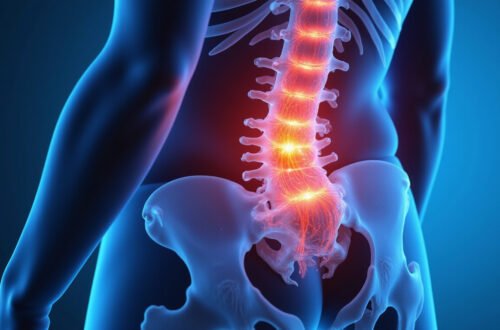Sciatica can be a daunting condition, often shrouded in misconceptions that add to the confusion and stress of those experiencing it.
Many people suffering from sciatica pain myths don’t realize that the journey to understanding this condition starts with separating fact from fiction.
In this ultimate guide, we’ll explore what sciatica is, debunk common myths surrounding it, and share effective strategies for relief and management.
Whether you’re dealing with sciatica yourself or are simply looking to educate others, our comprehensive overview will equip you with the knowledge needed to tackle this painful condition head-on.
Your Sciatica Pain-Free Future Starts Here – Click to Learn More!
Key Takeaways
- Sciatica is a symptom caused by nerve pain, not a disease itself.
- Surgery is not the only option; multiple non-invasive treatments exist for relief.
- Sciatica can affect people of all ages, not just older adults.
- Prolonged bed rest may worsen sciatica symptoms rather than provide relief.
- Active management strategies can significantly improve sciatica pain and enhance quality of life.
Introduction to Sciatica: What It Is and Common Symptoms
Sciatica, a term commonly used to describe pain that radiates along the path of the sciatic nerve, which runs from the lower back down through the hips and buttocks and down each leg, can be quite debilitating.
Understanding sciatica pain myths is crucial for anyone experiencing these symptoms, allowing for clearer communication with healthcare providers and better self-management.
Common symptoms associated with sciatica include sharp pain in the lower back, a tingling sensation in the legs, muscle weakness, and even difficulty moving the leg or foot.
It’s important to recognize that not all back pain leads to sciatica, and many misinterpretations of what sciatica entails can lead to increased anxiety and ineffective treatments.
In this examination of sciatica, we will uncover some prevalent myths and clarify the reality of this condition to help you navigate your symptoms more effectively.
Myth 1: Sciatica Is a Disease
One of the most prevalent sciatica pain myths is the misconception that sciatica is a disease.
In reality, sciatica is not a specific condition but rather a symptom of an underlying issue, typically involving irritation or compression of the sciatic nerve.
This nerve, which runs from the lower back down the legs, can become agitated due to various factors such as herniated discs, spinal stenosis, or even prolonged sitting.
Understanding that sciatica is a warning sign rather than a disease in itself is crucial for effective treatment and management.
By addressing the root cause of the sciatica pain, individuals are more likely to find relief and regain their quality of life.
‘The greatest enemy of knowledge is not ignorance, it is the illusion of knowledge.’ – Stephen Hawking
Myth 2: Surgery Is the Only Solution for Sciatica
When it comes to sciatica pain myths, one of the most prevalent is the belief that surgery is the only solution for this debilitating condition.
While it’s true that certain cases may require surgical intervention, the majority of individuals suffering from sciatica can find relief through non-invasive treatments.
Options such as physical therapy, chiropractic adjustments, and targeted exercises are often highly effective in alleviating sciatica pain.
Furthermore, incorporating lifestyle changes like better posture and regular stretching can significantly contribute to managing symptoms.
Therefore, it’s essential to explore these non-surgical alternatives before considering invasive procedures, as many people experience improvement in their condition with conservative care.
Your Sciatica Pain-Free Future Starts Here – Click to Learn More!
Myth 3: Sciatica Pain Only Affects Older Adults
One of the most common sciatica pain myths is that it predominantly affects older adults, leading many to believe that only seniors experience this debilitating condition.
However, this misunderstanding overlooks the fact that sciatica can strike anyone at any age.
Factors such as lifestyle choices, physical activity levels, and occupational hazards play a significant role in sciatica risk.
Young adults, particularly those who engage in physically demanding jobs or sports, may also suffer from sciatica due to herniated discs or injuries.
By debunking this myth, we can better understand the true nature of sciatica pain and the importance of maintaining a healthy spine at any age.
Myth 4: Bed Rest Is the Best Treatment for Sciatica
When it comes to sciatica pain myths, one of the most prevalent is the belief that bed rest is the best treatment for the condition.
Many individuals suffering from sciatica may think that lying in bed will help alleviate their discomfort, but this approach is often counterproductive.
In reality, prolonged inactivity can lead to muscle weakness, stiffness, and even worsen the pain.
Medical professionals now recommend that patients engage in gentle movements and physical therapy, as these can help relieve pressure on the sciatic nerve and promote healing.
Instead of succumbing to the myth of bed rest, patients should focus on maintaining a gradual level of activity that accommodates their pain, seeking solutions that encourage mobility and overall well-being.
FAQs
What is sciatica and what are its common symptoms?
Sciatica is a term used to describe pain that originates from the sciatic nerve, which runs from the lower back down each leg.
Common symptoms include shooting pain, numbness, tingling, or weakness in the leg or foot.
Is sciatica a disease?
No, sciatica is not a disease.
It is a symptom of an underlying condition, such as a herniated disc, spinal stenosis, or pelvic injury, that affects the sciatic nerve.
Is surgery the only solution for treating sciatica?
No, surgery is not the only solution for sciatica.
Many cases can be managed effectively with non-surgical treatments such as physical therapy, pain medication, and lifestyle changes.
Does sciatica only affect older adults?
No, while sciatica is more common in older adults due to natural wear and tear on the spine, it can affect individuals of any age, particularly those with certain risk factors like obesity or a sedentary lifestyle.
Is bed rest the best treatment for sciatica?
No, prolonged bed rest is not recommended for sciatica.
In many cases, staying active and participating in gentle exercises or physical therapy can aid in relief and recovery.






